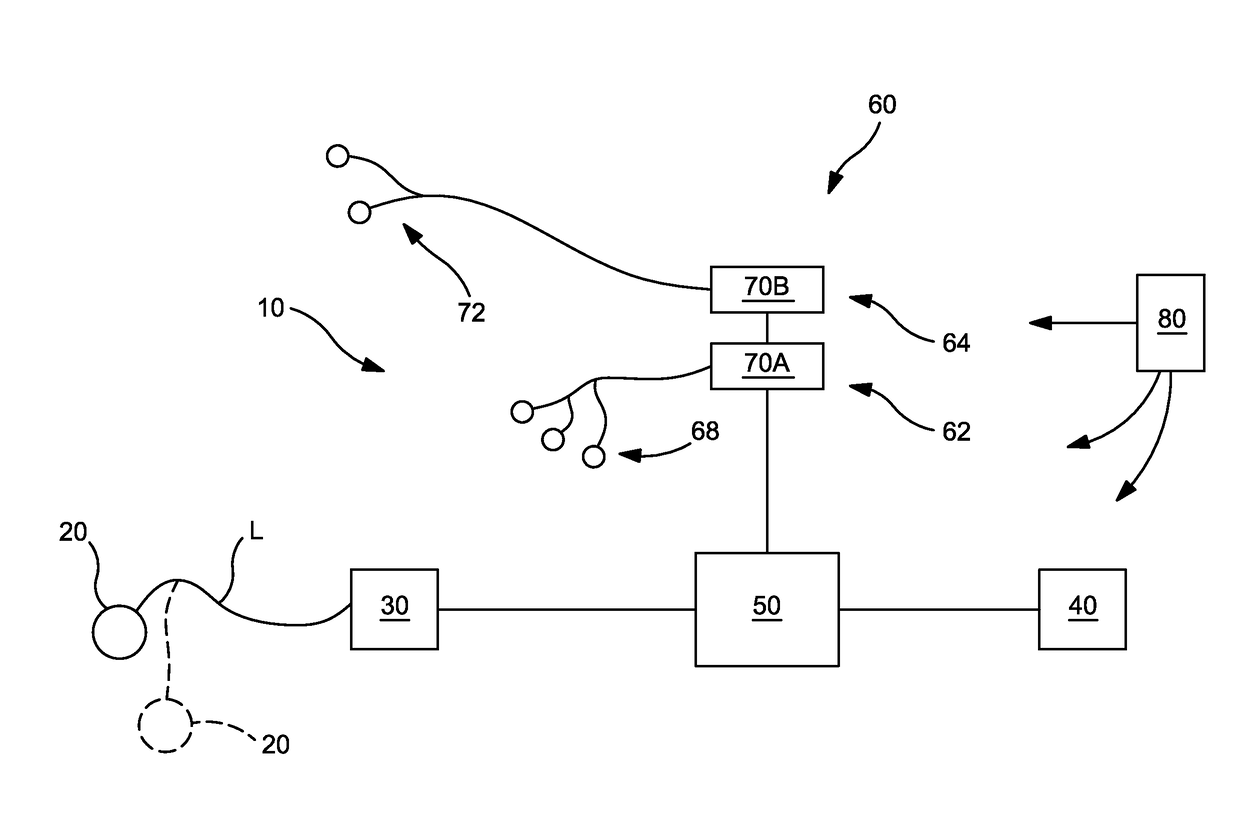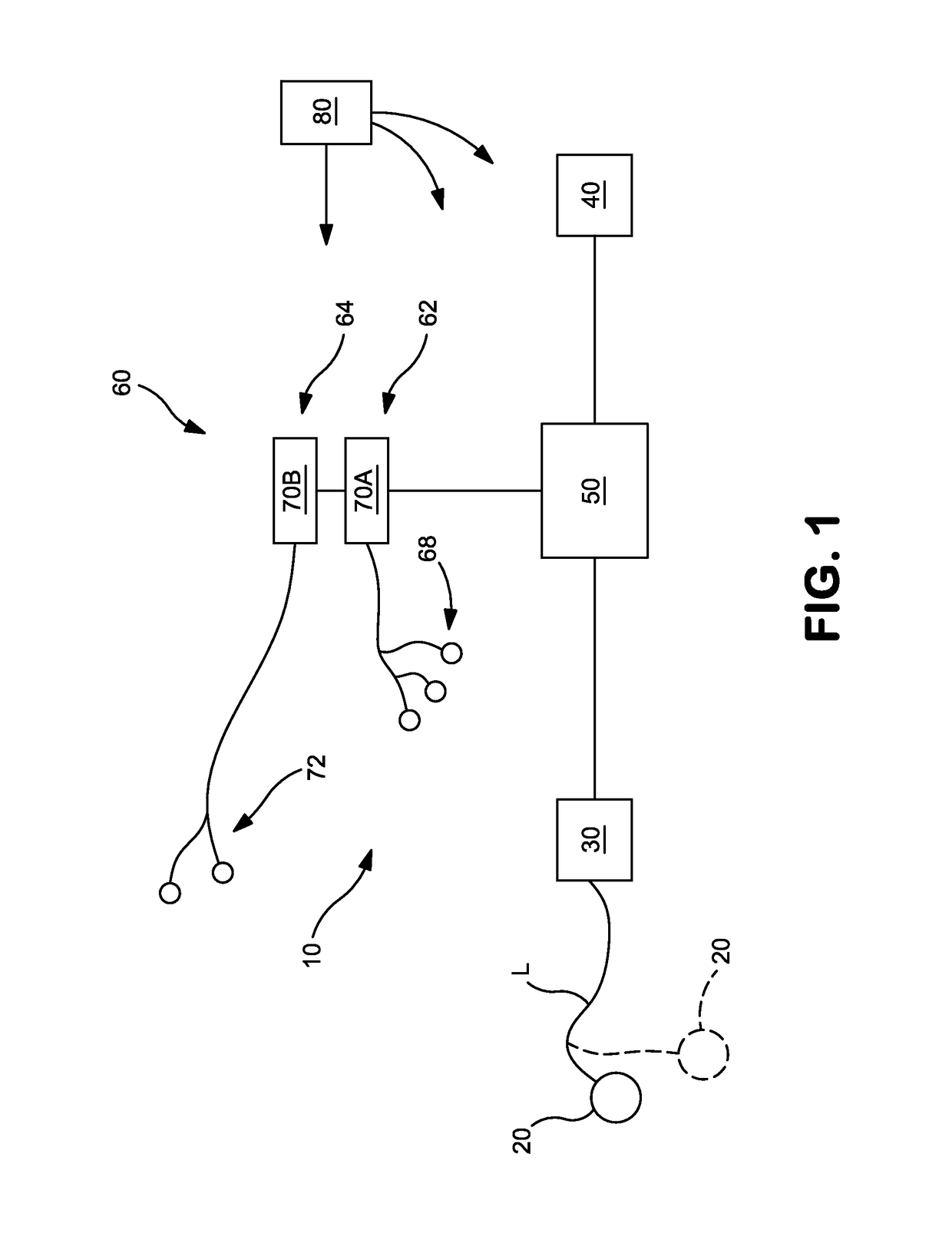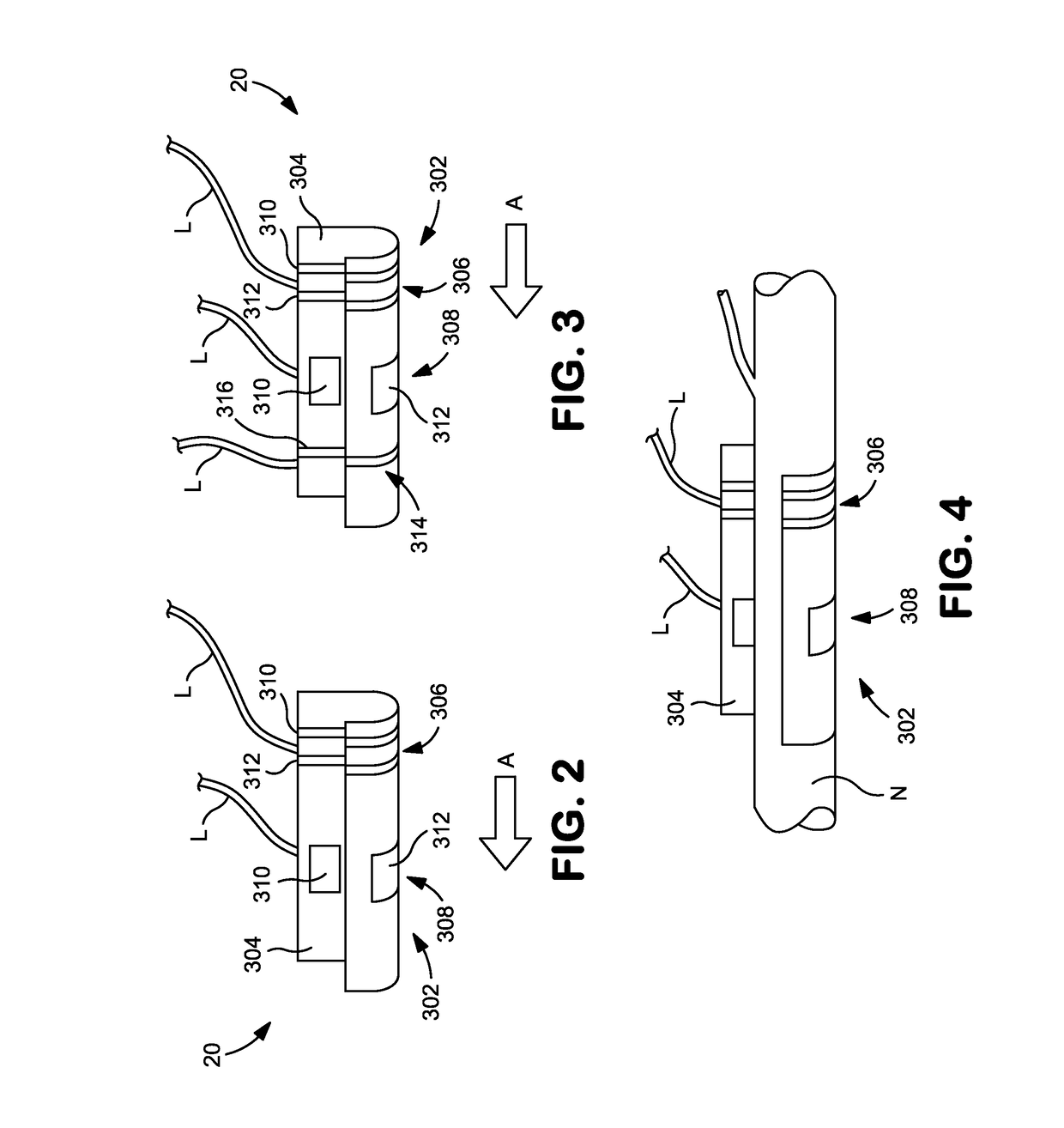Selective Nerve Fiber Block Method and System
- Summary
- Abstract
- Description
- Claims
- Application Information
AI Technical Summary
Benefits of technology
Problems solved by technology
Method used
Image
Examples
example 1
[0138]A nerve cuff was implanted around a target nerve and electrical stimulation was delivered to the target nerve at varying frequencies to determine the parameters to completely block A-fibers and to completely block C-fibers over a sample size of n=5. A complete block was defined as a greater than 75% decrease of burst area compared to pre-block conditions. The results are summarized in FIG. 16. As shown, nerve block stimulation frequencies of about 30,000 Hz or greater, such as between about 30,000 Hz and 70,000 Hz, resulted in the selective blocking of C-fibers with less stimulation intensity than the A-fibers, such as between about 2000 and 7000 microAmps.
example 2
[0139]Next, the ability to selectively block C-fibers (pain fibers) in mammals with a percutaneous electrode was demonstrated, as described below.
Recordings:
[0140]Electromyography signals (EMG) were recorded unilaterally from the biceps femoris muscle with insulated and braided 13 millimeter (mm) sub-dermal needle electrodes (RhythmLink, SC). Signals were passed through a nearby headstage, bandpass filtered (500 Hz to 5000 Hz) and amplified (500×; LP511, Grass Technologies, RI), and sent to a data acquisition system (Power3 1401, Cambridge Electronic Design, UK) for digitization.
Stimulation:
[0141]Electrical stimulation was delivered through subcutaneous needle electrodes that were inserted into the subject's left foot. The tip of the cathodic stimulating electrode was placed on the foot's midline and the anode was inserted laterally. Constant-voltage, monophasic square-wave pulses (2.5 millisecond pulse duration; 0.15 Hz) were delivered at intensities sufficient to cause a brisk pla...
example 3
[0146]Next, the effect of the position and orientation of the percutaneous electrode utilized in Example 2 on the ability to selectively nerve block A-fibers and C-fibers was demonstrated. As shown in Table 1 below, when the uninsulated portion of the percutaneous electrode was placed directly on top of the nerve to be blocked and a 10.8 milliAmp intensity stimulation was applied at 51 kHz, the A-fibers and C-fibers were blocked, as evidenced by a decrease in nerve signal transmission from full (100%) transmission to 18.30% for the A-fibers and 7.54% for the C-fibers for the first block, and to 23.03% for the A-fibers and 6.57% for the C-fibers for the second block. Then, when the blocking stimulation was stopped, the nerve signal transmission returned to pre-block levels for both the A-fibers and the C-fibers. In contrast, when the insulated (non-active) portion of the percutaneous electrode was placed directly on top of the nerve to be blocked (i.e., the insulated, active portion ...
PUM
 Login to View More
Login to View More Abstract
Description
Claims
Application Information
 Login to View More
Login to View More - R&D
- Intellectual Property
- Life Sciences
- Materials
- Tech Scout
- Unparalleled Data Quality
- Higher Quality Content
- 60% Fewer Hallucinations
Browse by: Latest US Patents, China's latest patents, Technical Efficacy Thesaurus, Application Domain, Technology Topic, Popular Technical Reports.
© 2025 PatSnap. All rights reserved.Legal|Privacy policy|Modern Slavery Act Transparency Statement|Sitemap|About US| Contact US: help@patsnap.com



